|
|
 subscribe
subscribe
|
 subscribe subscribe
|

Pantheon |
. . . . . . . . . . . . . . . . . . . . . . . . . . . . . . . . . . . . . . . . . . |
2000 Italia: Pantheon The Pantheon (Temple to All Gods), in the Piazza Rotondo, contains the largest dome in Rome, even larger than St. Peter's.  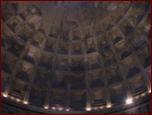 I think the most impressive feature of the Pantheon is the façade, but such a large dome in the ancient structure is pretty awe-inspiring. Better yet is the huge oculus (hole) in the ceiling, a ten-meter span through which rain and snow fall. On our last day in Roma it rained cats and dogs and had the luck to be in the neighborhood. I sprinted over to the Pantheon to see rain fall to the marble floor just as though I was in an oversized shower. (Drainage holes have been placed in the floor to match the pattern of the construction; you have to know they're there to spot them.)
I think the most impressive feature of the Pantheon is the façade, but such a large dome in the ancient structure is pretty awe-inspiring. Better yet is the huge oculus (hole) in the ceiling, a ten-meter span through which rain and snow fall. On our last day in Roma it rained cats and dogs and had the luck to be in the neighborhood. I sprinted over to the Pantheon to see rain fall to the marble floor just as though I was in an oversized shower. (Drainage holes have been placed in the floor to match the pattern of the construction; you have to know they're there to spot them.)Atop the proscenium you'll find the inscription "M. AGRIPPA L. F. COS. TERTIUM. FECIT". Translated from the Latin it says "Marcus Agrippa, son (F) of Lucius, Consul (COS) for the third time (Tertium), built this." Agrippa probably did build the first Pantheon, but Hadrian rebuilt it entirely. Hadrian, modest by Roman standards, never had his name inscribed on any of his buildings. He honored Agrippa's fame by repeating the original inscription on the new structure. Inside the Pantheon you'll see crypts, Christian prayer areas, and the burial place of Vittorio Emmanuele II. 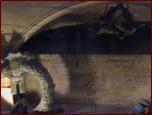
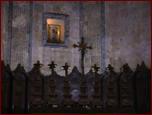

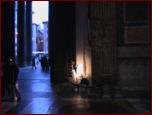 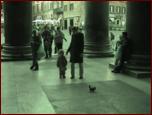
|
| Have you found errors nontrivial or marginal, factual, analytical and illogical, arithmetical, temporal, or even typographical? Please let me know; drop me email. Thanks! |